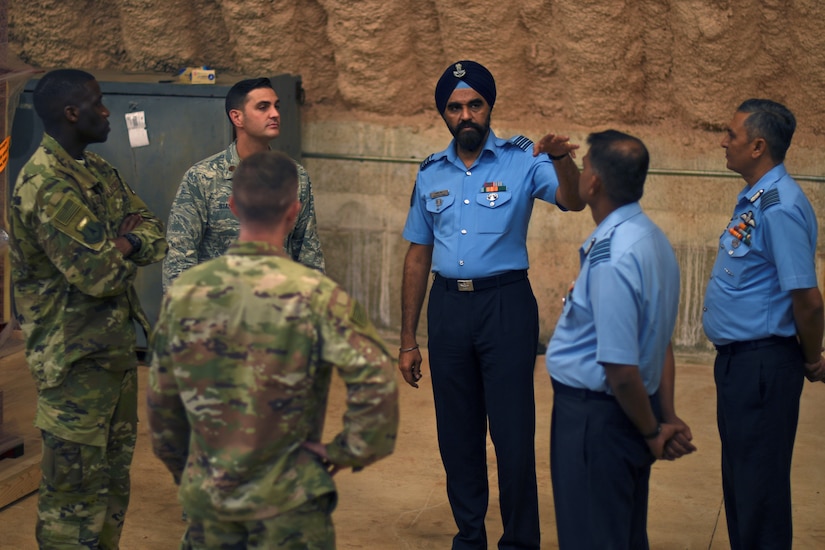By Jim Garamone, DoD News, Defense Media Activity
WASHINGTON -- Next week’s “two-plus-two” meeting of defense
and diplomatic leaders in New Delhi will seek to deepen cooperation between
India and the United States and bolster programs and policies to maintain the
free and independent Indo-Pacific region that has been in place since World War
II, the assistant secretary of defense for Asian and Pacific security affairs
said today.
Randall G. Schriver spoke with Ashley J. Tellins at the
Carnegie Endowment for International Peace about the ground-breaking meeting
scheduled Sept. 6 and 7 between Secretary of State Mike Pompeo and Defense
Secretary James N. Mattis and their Indian counterparts, External Affairs
Minister Sushma Swaraj and Defense Minister Nirmala Sitharaman.
It is the first such meeting between the nations.
The outreach to India – the largest democracy in the world –
is the outgrowth of more than 20 years of diplomacy reaching back to the
Clinton administration, Schriver said. At its heart is ensuring conditions for
a free and independent region.
“We believe countries should have complete sovereign control
of their countries, to make decisions from capital free from coercion [and]
free from undue pressure. We also mean free, open and reciprocal trade
relationships,” he said. “By ‘open,’ we’re talking about open areas for
commerce, for navigation, for broad participation in the life of the region
commercially and economically.”
Schriver talked about “operationalizing” the areas of
convergence between the two nations. Some of these areas will be in defense,
some will be economic, and others will be political, he said, noting that the
principals will discuss this at the meeting.
Chinese Aspirations
China is the elephant in the room. Though U.S. policy is not
aimed at any specific nation, Schriver said, “China is demonstrating that they
have a different aspiration for the Indo-Pacific region. This manifests in
their economic strategy, the Belt and Road Initiative, their militarization of
the South China Sea, a lot of the coercive approaches to the politics of
others.” The Belt and Road Initiative is Chinese investment in infrastructure
projects in countries that lie between China and Europe.
The United States would prefer China buy into the current
rules-based international system, the assistant secretary said.
At the meeting, officials will examine how and where the
United States and India can work together, Schriver said, adding that he sees
both countries’ efforts complementing each other in some nations of the region
and closer cooperation on the security side.
“We’ve seen exercises – not just bilateral India-U.S.
exercises, but multilateral exercises,” he said. “Obviously, you exercise for a
reason. You exercise to improve the readiness and training of your own forces,
but you think about contingencies, you think about real-world possibilities.”
The substance of the meeting will be discussions about
regional and global issues, but there will also be concrete outcomes, Shriver
said.
“We’re working on a set of enabling agreements,” he said.
“Collectively, what they will allow us to do is have secure communications,
protect technology, protect information. Getting those agreements in place will
allow security assistance cooperation to go forward, allow us to exercise and
train in more meaningful ways. I think we are going to expand the scope of some
of our exercises – increase the complexity and elements that will participate.”
Schriver said discussions also will look at the situations
in Russia, Afghanistan, Iran and Pakistan.

No comments:
Post a Comment